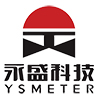Control Valve is used to regulate the flow of liquid or gas. It does so by opening up or closing the internal passages. The control valves are used to form a part of the loop that is used to control a process. They help in responding to the instructions that they receive from the controller and then adjust the internal opening or closing accordingly.
The Different Components of Control Valve and How Does It Work?
Control Valve has different components that help in controlling certain conditions such as pressure, temperatures, flow and liquid levels. It is done by opening and closing according to the different signals received by the controller. The control valve is also called the final control element. The controller is responsible for sending out signals that he compares to a set point to process a variable.
The different values for this process are given by the sensors. The sensors also help in monitoring the conditions. The in-process industry control valve is known as the final control element. It helps in controlling the flow of a fluid like gases, steam and water. This way, it compensates for the disturbance.
Here are the two different components of the control valve and this is how they work:
- Valve
Valve is one of the most important components of the control valve. There are two types of valves:
- A plug
- Seat design
A plug is put against a seat design. This way, a plug is closed against a seat or a quarter-turned valve. There is a disc in such a valve or a ball or cone which is then turned against the seat.
- Actuator
The actuator consists of an electric or pneumatic medium. It provides the force which is required to operate the control valve. The actuator helps in keeping the balance of the control valve.
Different Features of Control Valve
Here is a list of the different features of the control valve:
- Electric
The electric valves are actuated with the help of an electric motor. There is a wide range of control operations and different valves that exist. However, they mainly have two forms of action that they are good at performing.
Here they are:
- Rotary
- Sliding stem
- Pneumatic
The pneumatic valve is actuated with the help of a compressible medium such as hydrocarbon, nitrogen or air. There is also a piston-cylinder, a piston spring actuator or a spring diaphragm.
- Hydraulic
The hydraulic valves are actuated with the help of a non-compressible medium such as oil or water.
The Different Types of Control Valves
Here is a list of the different types of control valves:
- Rotary motion valve
One of the most popular types of control valves is the rotating motion valve. It is both pocket friendly and light in weight. This one is for people who do not want to spend too much but still want to get a control valve that works great.
- Linear motion valve
A linear motion valve has an element of the opening and closing feature. It keeps on moving in a straight line. The linear motion valve helps in keeping the temperature and flow of water in check.
The Advantages of Using a Smart Control Valve
Here are the advantages of using a smart control valve:
- The smart control valve helps in the automatic calibration of the positioner.
- It shows real-time diagnostics.
- It helps in reducing the cost of the loop commissions.
- It includes the installation process as well as calibration.
- The smart control valve uses diagnostics to keep a check on the loop performance levels.
- The smart control valve has a controlled accuracy.
- It reduces the process variability.
The Different Applications of a Control Valve
The thing about the controller tuning is that it helps in dictating the way the control valve responds to the different changing process parameters.
The tuning feature of the control valve helps in setting the speed and the intensity levels of the control valve. The valve then responds accordingly when there is a need for correction.
The controller has an internal logic that helps in producing an output to the actuator. It helps in moving the stem to a predetermined amount.
Here is what the real logic behind this is:
- The size of the discrepancy which is between the set point and the current value of the controlled parameter is proportional
- The length of the discrepancy has to be present that is integral
- The speed at which the discrepancy is changing is the derivative
All of the above helps in determining how fast or far the stem will move.
The position of the trim needs to be altered. When that is done, the controller then waits for the next sample signal to come from the sensing element. It is done to make sure that the difference remaining at the set point will be checked.
The control valve stem is further moved. This way, the flow is altered until a difference between the set point and the actual value is within the tolerance parameters. For example, the tuning of a control valve can be linked to someone who is under a shower, adjusting the water taps to get the right water temperature and flow.
Final Words
Ysmeter firmly advocates the safety and care of the customers. We believe that it is one thing that should be made the top priority when it comes to controlling valves. Keeping the same in view, we have been in the business for years, making innovative control valves with the best technology and high efficiency. Our control valves ensure the performance of the product.
You can call us up or visit our website for more detailed information: https://ysmeter.net/

